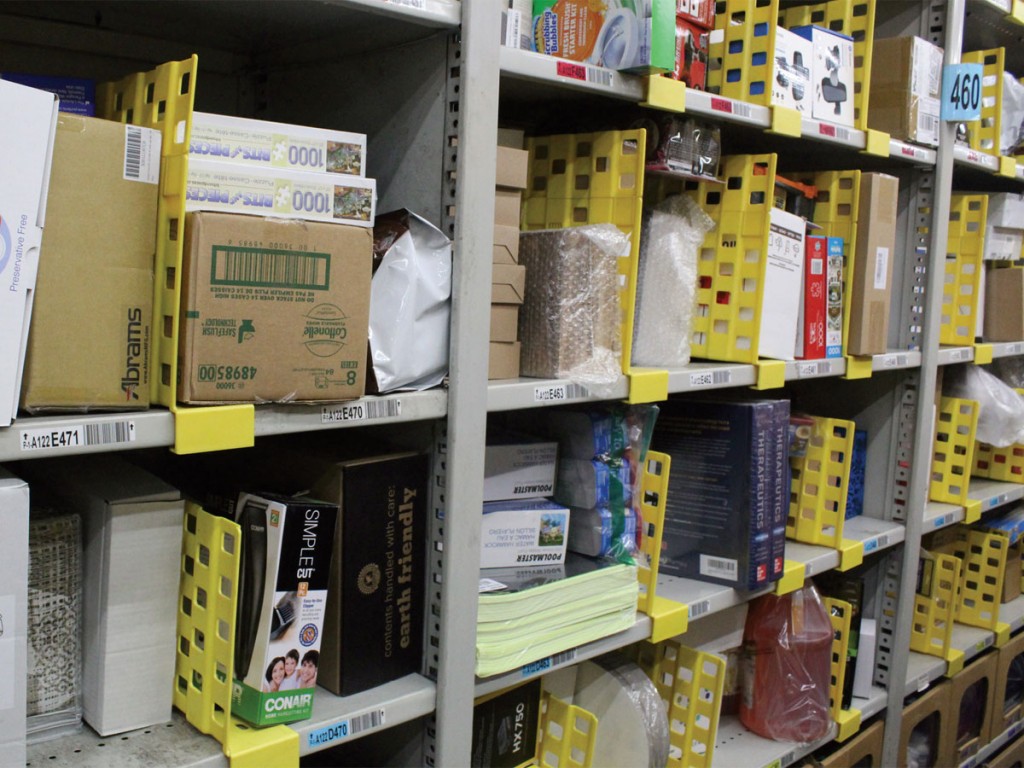Back in the old days, file cabinets stored information in an orderly, alphabetic and/or numeric, fashion. That’s how you knew where to retrieve a document you needed. Along came computers and made information retrieval more efficient, not by storing information in any particular order, but by storing it randomly. Data is retrieved quickly because the computer knows where it is and accesses it electronically.
The same principle is at play at the Amazon Fulfillment Center in Richmond, Virginia. The 1.2 million square foot facility maximizes the use of shelf space and achieves other operational efficiencies by stowing products randomly on shelves.

Amazon might be better known for its shelf-moving warehouse robots, but it’s random stowing and picking that gets products in and out the door quickly, according to Stan Miller, the Richmond facility’s general manager.
“We’ve brought in up to one-million units and shipped out as many as 750,000 units in a single day,” Miller said.
How does the random stow process work? When a carton of breakfast cereal arrives at the warehouse, an employee removes each individual box and stows it wherever he finds space, so a shipment of 50 cereal boxes may end up in 50 different locations. (There are a few constraints, such as the proximity of food products to toxic materials and the relative positions of heavier and bigger items.)
If you look at a bin on an Amazon warehouse shelf, you might find a box of office supplies next to a blow dryer next to a jigsaw puzzle. The secret sauce is the serial number and bar code assigned to each individual item. That’s how the system knows where each item is stowed and how to direct pickers to retrieve them to fulfill customer orders.
Randomness provides several other efficiencies, such as reducing travel time. If a picker had to travel to a cereal department, “it might be 10 feet or 100 yards away,” said Miller. But if the cereal is stored in 50 different locations, there’s a much better chance that there’s a box close by.
Since most items are shipped one by one, Amazon will likely ship a single box of cereal to a customer, not a carton of 50. “So there’s no reason to keep 50 together in the warehouse,” explained Miller. If high-demand items were stored in the same location, “the entire section would be full of people lining up to get them. The path between that and the packing area would also be full of carts.”
Randomness also saves lots of space. Amazon carries a huge number of items but not many of each. “If we needed to have a space for every product, we would need a gigantic warehouse,” said Miller. “It’s more efficient to use any free shelf space available.”




